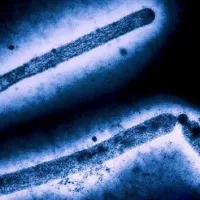
(BUFFALO, N.Y.) — Dr. Michael Manka had just finished his shift at Erie County Medical Center in Buffalo, New York, Saturday afternoon and was getting ready to head home.
Then the hospital received a call: a gunshot victim was being transported. Soon, the center learned that there had been a mass shooting with multiple victims.
In total, 13 people were shot at Tops Friendly Market, a supermarket 2.5 miles away, in what the Buffalo Police Department described as a racially motivated attack.
Of the victims, 10 were killed and the remaining three — identified by authorities as Zaire Goodman, 20; Jennifer Warrington, 50, and Christopher Braden, 55 — were rushed to ECMC.
“Initially, we did not know how many victims were going to be coming to the hospital and we were preparing for the worst like we typically do with mobilizing our teams, getting as many nurses, doctors, anesthesia teams ready for the arrival of multiple gunshot victims,” Manka, chief of emergency medicine at ECMC, told ABC News.
Goodman was the first victim who arrived at ECMC with a gunshot wound to the upper back and neck, according to the doctor and police.
Manka said Goodman underwent an initial assessment to make sure that his breathing, blood pressure and circulation were stable. Next was to make sure he didn’t have a spinal injury or any other internal injuries.
Doctors determined he had some shrapnel trapped under the skin but that it did not need to all be removed.
“Shrapnel or bullets will be — depending on where they’re located in the body — will be left alone because going searching and trying to dig them out can often do more harm than benefit if it’s in a joint, if it’s very near a major vascular structure,” Manka said. “More often than not, bullet fragments and shrapnel are left alone and, in the body, just heals over them.”
He added that because Goodman was stable enough, he was able to be discharged and sent home Saturday.
“He was unfortunate that he was involved in this incident and shot, but he was fortunate that he didn’t have any serious life-threatening injuries,” Manka said.
The second patient, Warrington, had a graze to the scalp, although it’s unclear whether it was a bullet or a piece of shrapnel that inflicted the injury.
Manka said she underwent the same initial assessment as Goodman, as well as CT scans to make sure nothing had penetrated the skull and into the brain.
“The patient was fortunate that the wounds were not life-threatening and did not require additional care really,” he said. “The patient was awake and alert and stable and … thankfully, was discharged home.”
Braden, the third patient, had the most serious injury: a gunshot wound to the lower leg.
“The third victim that came in … had a pretty bad fracture from the gunshot wound and thankfully was stable but did require an operation to try and fix his leg,” Manka said.
He said when a bullet hits a bone, such as in the leg, it can often shatter the bone as opposed to causing a clean break.
Manka said Braden’s injury may require an external fixator, a metal device that attaches to the bones of the arm, leg or foot with pins and holds the bones together to allow the injury to heal.
He added that he is not sure if Braden will need additional surgeries but that he is still hospitalized in stable condition.
“Typically, a fracture patient will be in the hospital for a handful of days, maybe getting some IV antibiotics to prevent infection and making sure that the extremity is healing OK, without any complications,” Manka said. “This patient may or may not be in the hospital for more than a few days. I think it depends on what the orthopedic plan is to definitively fix that fracture.”
Manka said recent U.S. military conflicts have shed light on the best practices for saving lives and have become standard among civilian paramedics.
“Probably the biggest one that we’ve seen have an impact would be the use and the encouraged use of tourniquets,” he said.
Tourniquets are tight bands that completely stop a traumatic wound from bleeding before or during transport for treatment.
Even though tourniquets have been around since the days of Alexander the Great, they fell into disuse during the end of the 20th century, Manka said, after experts claimed the devices were causing too many patients to have limbs amputated because the blood supply had been cut off for too long. However, recent studies have found that tourniquets “dramatically decrease death from uncontrolled hemorrhage” both on the battlefield and among civilians.
Of the Buffalo shooting victims, Braden had a tourniquet applied to his leg by EMTs before arriving at the hospital.
“It’s hard for me to tell you whether that patient was bleeding enough that [the tourniquet] is what made the difference, but certainly if he was bleeding profusely at the scene, which I suspect he must have been [since] EMS decided to put a tourniquet on, that may have helped maintain his stability on the way to the hospital,” Manka said.
Copyright © 2022, ABC Audio. All rights reserved.















